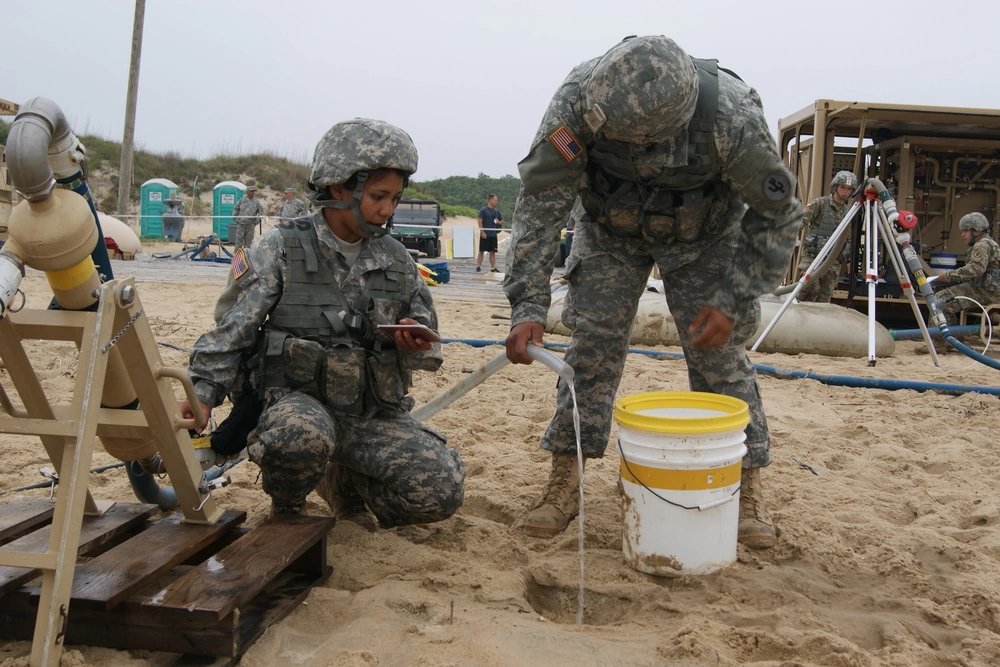

While on an outdoor adventure, water, food, shelter and fire are essentials. Soldiers might find themselves in difficult situations where water is scarce. Besides, adding two pounds of water to their pack may not be the best option with all the gear we carry, because it does run out. In training we’re used to wait for resupplies. Once, while stationed in Djibouti, we went days without water due some logistical error. Regardless we adapted and overcame by rationing water. It actually turned out to be good training for water conservation … but it sucked so hard.
The US Army often finds it difficult to hydrate its soldiers when deployed in arid areas such as the Middle East and Africa. For almost two decades of mission in these areas, the soldiers have always survived with bottled water, local wells and purification units.

Bottled water, although the safest, is costly, therefore, might be unavailable when Army resources are depleted in a real world scenario. On the other hand, local wells and purification units are hard to find and are sometimes too salty to consume. Warm climatic conditions increase the need for water in the body because it constantly needs to cool down. This implies that soldiers deployed in arid areas need more water supply, which is a burden for constantly moving troops. Besides, US troops are usually compelled to help residents of arid areas; therefore, they might share the little water they have — tactically wrong but morally correct.
While on a real world campaign, soldiers can drink several types of water. River water is the main source and the most abundant. Although most rivers have slightly salty water, they are normally fresh, therefore one of the best options. In the ancient periods, troops would set camp in areas near large freshwater sources to satisfy the needs of the thousands of soldiers. Moreover, water from rivers proved suitable for other uses like cleaning clothes and bathing whenever necessary. The soldiers would avoid drinking from stagnant water sources because they could easily be contaminated. Moving water was the safest in preventing infectious waterborne diseases.

Additionally, natural springs are a good but rare source of water. In some areas, rainwater accumulates in rocks under the soil to form a leak emanating from the surface as a spring or puddle. If the water force is strong enough, it will form a small stream from which people drink. Spring water is the safest and most nutritious as it sometimes contains minerals such as calcium, magnesium and manganese, which are essential for strong immune. The vital minerals present in spring water give a reputation for healthy drinking. Some water companies fetch spring water, remove impurities, bottle it, and brand it as mineral water. For soldiers, this is a plus because they might not get such minerals from other water sources.
Soldiers can benefit from artesian water from aquifers located deep in the earth when deployed in rocky areas. Such water contains fluoride and sodium bicarbonate that are good for strong, healthy teeth and bones. While most artesian water has varied tastes and minerals, they are sure to provide the right electrolytes needed to curb dehydration. On rare occasions, the soldiers might be dispatched to areas that experience extremely low temperatures during winter. In such circumstances, they might benefit from glacial water that sometimes has the same properties as spring water. Often, water from glaciers is clean, non-toxic and might contain essential minerals.
Distilled water is also a great option, although it might take a lot of time to prepare. If there is enough time to distill, soldiers can improvise and use kettles to purify water. The beauty of water distillation is that it removes the weird tastes and kills germ-causing bacteria. However, with distilled water, it might be impossible to acquire essential minerals that boost the immune system. According to Katherine Marengo LDN, R.D., Nutrition, distilled water can pull in minerals from other sources within the body, potentially dehydrating you more.
